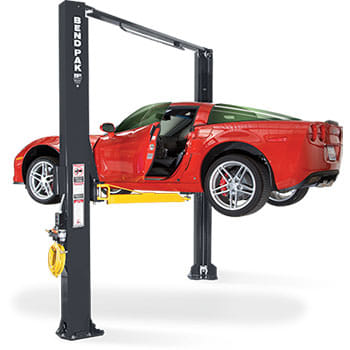Factors Influencing Home Insurance Premiums can be offering protection and peace of mind in the face of unexpected events. It serves as a safety net, covering losses and damages to your property, personal belongings, and liabilities. However, the cost of home insurance, also known as the premium, varies significantly from one homeowner to another. Numerous factors come into play when determining home insurance premiums, and understanding these factors can help you make informed decisions when shopping for coverage. In this comprehensive guide, we will delve into the key factors that influence your home insurance premiums.
-
Location: One of the most significant factors affecting your home insurance premium is your home’s location. Insurance companies consider various aspects of your location, including the area’s crime rate, proximity to fire stations, and natural disaster risk. Homes in areas with a high crime rate or those prone to natural disasters like hurricanes, earthquakes, or wildfires generally have higher premiums. Conversely, homes in safer neighborhoods with good fire protection services often enjoy lower premiums.
-
Type of Policy: There are different types of home insurance policies, including HO-3 (the most common for single-family homes), HO-4 (renters insurance), HO-6 (condo insurance), and more. The type of policy you choose will impact your premium. Policies that offer broader coverage and higher limits will typically have higher premiums.
-
Dwelling Coverage: Dwelling coverage is the part of your policy that protects the physical structure of your home, including the walls, roof, and foundation. The amount of dwelling coverage you select directly influences your premium. Higher coverage limits will result in higher premiums. To determine the appropriate amount of dwelling coverage, you should consider your home’s replacement cost, which is the cost to rebuild your home from scratch in the event of a total loss.
-
Personal Property Coverage: Personal property coverage protects your belongings inside the home, such as furniture, electronics, and clothing. The value of your personal property affects your premium. If you have expensive items or a substantial amount of personal property, you may need higher coverage limits, which will increase your premium.
-
Deductible Amount: The deductible is the amount you agree to pay out of pocket before your insurance coverage kicks in. Choosing a higher deductible will lower your premium because you are assuming more of the financial risk in the event of a claim. However, be sure to select a deductible that you can comfortably afford to pay in case of a loss.
-
Credit Score: In many states, insurers use your credit score as a factor in determining your home insurance premium. A higher credit score can result in a lower premium, as it is often seen as an indicator of financial responsibility. Conversely, a lower credit score may lead to higher premiums.
-
Claims History: Your claims history plays a significant role in determining your home insurance premium. If you have a history of filing frequent or large claims, insurers may view you as a higher risk and charge you a higher premium. Maintaining a claims-free history can help keep your premiums lower.
-
Home Age and Condition: Older homes may have higher insurance premiums because they often require more maintenance and repairs. Additionally, if your home has outdated electrical or plumbing systems, it may be considered riskier and result in a higher premium.
-
Safety Features: Installing safety features in your home can lead to premium discounts. These features may include smoke detectors, burglar alarms, fire extinguishers, deadbolt locks, and even a home security system. Insurers view these measures as reducing the risk of damage or theft, which can lead to lower premiums.
-
Distance to Fire Hydrant and Fire Station: Proximity to a fire hydrant and a fire station can impact your premium. Homes located closer to these fire-fighting resources are seen as less risky because firefighters can respond more quickly in the event of a fire.
-
Swimming Pools and Trampolines: Pools and trampolines are considered attractive nuisances, as they pose potential safety risks. Insurers may charge higher premiums or require additional liability coverage if you have these features on your property.
-
Pets: Certain dog breeds, often those considered more aggressive, can result in higher premiums due to the increased risk of liability claims. Some insurers may even exclude coverage for specific dog breeds.
-
Home-Based Business: If you operate a business from your home, your homeowners insurance may not cover business-related liabilities or property damage. You might need to purchase a separate business insurance policy, which can impact your overall insurance costs.
-
Discounts and Bundling: Insurance companies often offer discounts for various reasons, such as bundling your home and auto insurance, having a good claims history, or making home improvements that reduce risk. Be sure to inquire about available discounts when shopping for coverage.
-
Lender Requirements: If you have a mortgage, your lender may have specific insurance requirements, such as a minimum coverage amount or a particular deductible. Failing to meet these requirements could result in higher premiums or even loan default.
-
Policy Add-Ons and Endorsements: Adding additional coverage or endorsements to your policy, such as flood insurance or earthquake coverage, will increase your premium. These additions are necessary in areas prone to such events but should be carefully considered based on your location and risk exposure.
-
Homeowners Association (HOA) Requirements: If you live in a community with a homeowners association, they may have specific insurance requirements or recommendations that can affect your premium.
-
Market Conditions: The overall insurance market and economic conditions can impact premium rates. Factors like inflation, natural disasters, and changes in the cost of building materials can lead to fluctuations in premiums.
-
Policy Limits: In addition to the dwelling and personal property coverage limits, other policy limits, such as liability coverage and additional living expenses (ALE) coverage, can influence your premium. Higher limits generally mean higher premiums.
-
Discounts for Home Upgrades: Making home upgrades that enhance safety and reduce risks, such as adding storm shutters, reinforcing the roof, or upgrading the electrical system, can result in premium discounts.
-
Claims History of the Area: The claims history of your neighborhood or region can also impact your premium. If there have been frequent claims in your area, insurers may view it as a higher-risk area, which can lead to higher premiums for residents.
-
Coverage Options: Some insurance companies offer more flexible coverage options than others. Depending on your needs, you may choose a policy with more or fewer coverage options, which will affect your premium.
-
Policy Term and Payment Frequency: The length of your policy term and how frequently you make payments can also affect your premium. Some insurers offer discounts for longer policy terms or for making annual payments instead of monthly.
-
Insurance Company: Different insurance companies have varying underwriting guidelines and pricing structures. It’s essential to shop around and compare quotes from multiple insurers to find the best coverage at the most competitive price.
-
Renovation and Construction Materials: If you’re planning renovations or have used specific construction materials that reduce the risk of damage (e.g., impact-resistant roofing materials), you may be eligible for premium discounts.






